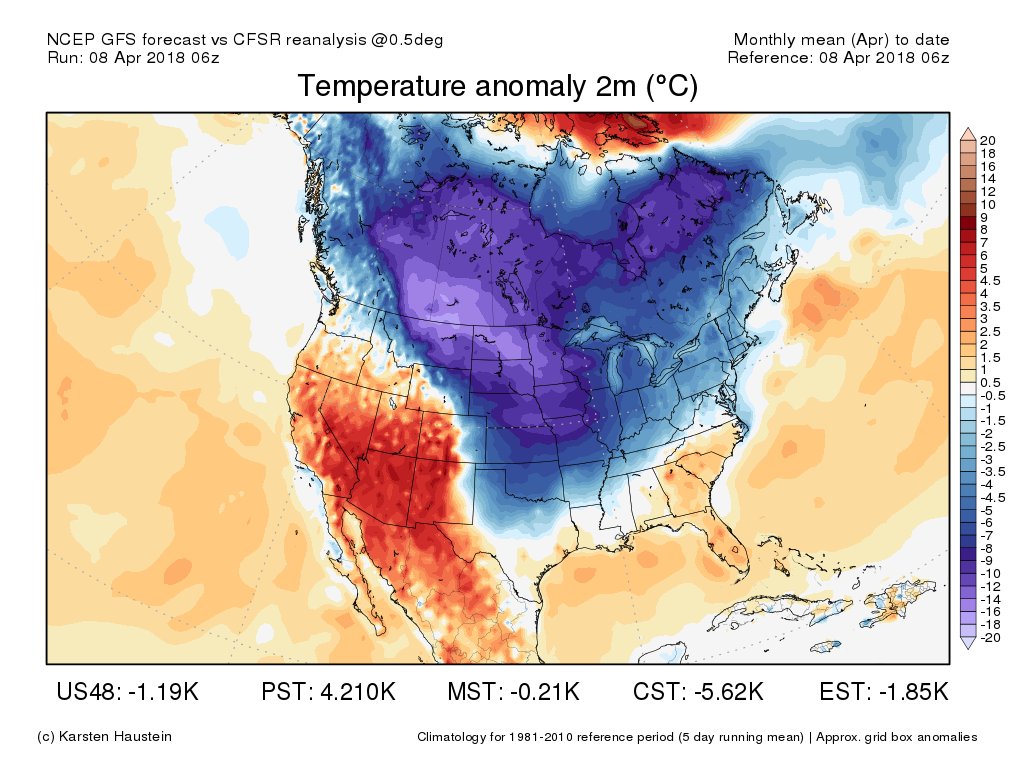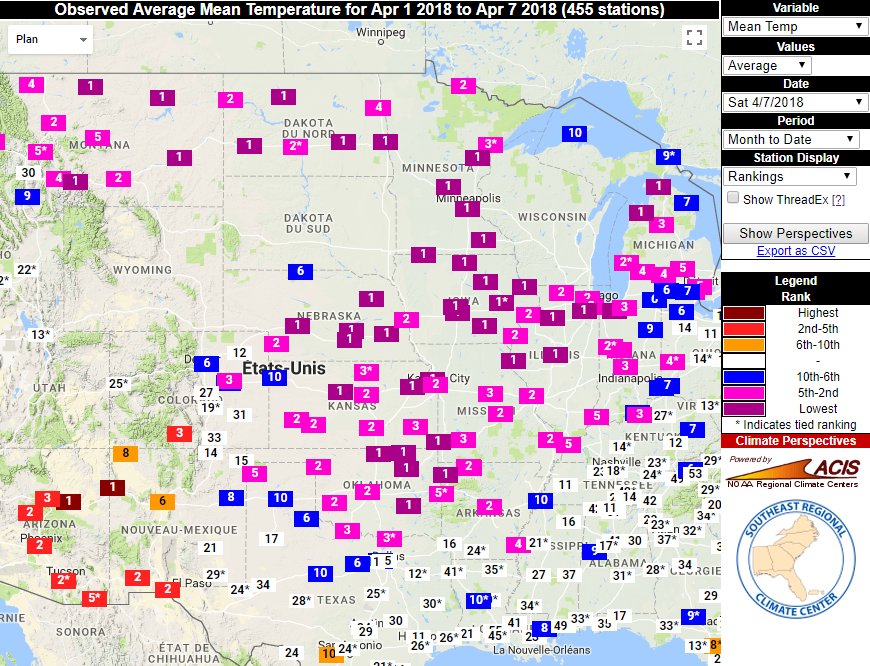Sunday April 8th… Dear Diary. The main purpose of this ongoing post will be to track United States extreme or record temperatures related to climate change. Any reports I see of ETs will be listed below the main topic of the day. I’ll refer to extreme or record temperatures as ETs (not extraterrestrials)😊. Here is today’s main climate change related topic:
I’ve been remiss not stating that global warming is not only a threat to humanity but for the entire biosphere as well. We know this from mass extinctions that occurred in Earth’s distant past when natural phenomena like volcanoes significantly raised the level of carbon in the atmosphere and thus temperature. Today I’ll be reporting about a new article linking levels of CO2 to eradication of many species:
http://www.desdemonadespair.net/2018/04/study-finds-warning-signs-for-mass.html
From the article:
The warning signs of mass extinction are also visible today.
The factors that led to a mass extinction at the end of the Permian Period remind us very much of today, says Prof. Wolfgang Kießling. “There is much evidence of severe global warming, ocean acidification, and a lack of oxygen. What separates us from the events of the past is the extent of these phenomena. For example, today’s increase in temperature is significantly lower than 250 million years ago.”
However, the warning signs that Wolfgang Kießling’s team found towards the end of the Permian Period can already be seen today. “The increased rate of extinction in all habitats we are currently observing is attributable to the direct influence of humans, such as destruction of habitat, over-fishing, and pollution. However, the dwarfing of animal species in the oceans in particular can be quite clearly attributed to climate change. We should take these signs very seriously.”
The original article, titled “Pre-mass extinction decline of latest Permian ammonoids” by Wolfgang Kiessling, Martin Schobben, Abbas Ghaderi, Vachik Hairepatan, Lucyna Leda and Dieter Korn, was published in the journal Geology (doi: 10.1130/G39866.1).
Abstract:

(Artist rendering of large amphibians being threatened by global warming during the Permian-Triassic extinction event)
Here is an example of today’s animal species not adapting well to climate change:
A new international study out of the University of Edinburgh, with key input from Canadian researchers, has shown that seabirds are not adapting to warming sea surface temperatures caused by climate change.
The study, which was published in the scientific journal Nature Climate Change, looks at more than 60 species of seabirds from 145 populations around the world with data going back to the 1950s.
Although rising temperatures show that food sources like plankton, insects and vegetation have been appearing earlier each year, seabird populations are not matching up their breeding and nesting patterns to adapt with this change.
Heed the warnings, demand changes to your energy diet.
……………………………………………………………………………………………………………………………….
Wow! It was extremely cold in the Midwest during the first week of April:
1st week of exceptionally cold April of the Canadian prairies to the Great Plains & Midwest USA, the cold + never seen by ex in Havre (Montana), Minneapolis, Des Moines, Springfield, North Platte, Topeka…
Weekly anomaly-5/-10 °c, locally close to-15 °c


Typo: St. Cloud’s low temperature was actually 3, breaking the record of 7.
(If you like these posts and my work please contribute via the PayPal widget, which has recently been added to this site. Thanks in advance for any support.)
The Climate Guy

